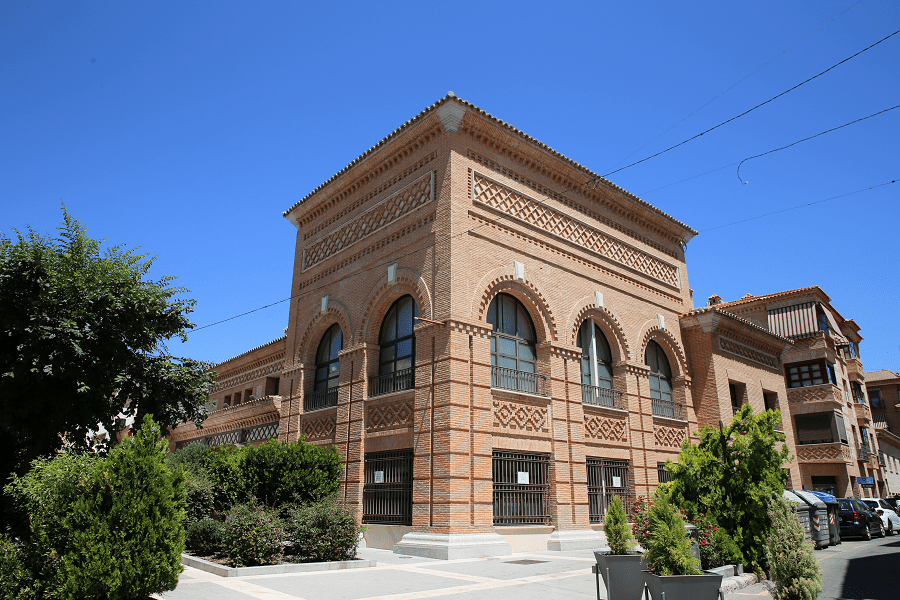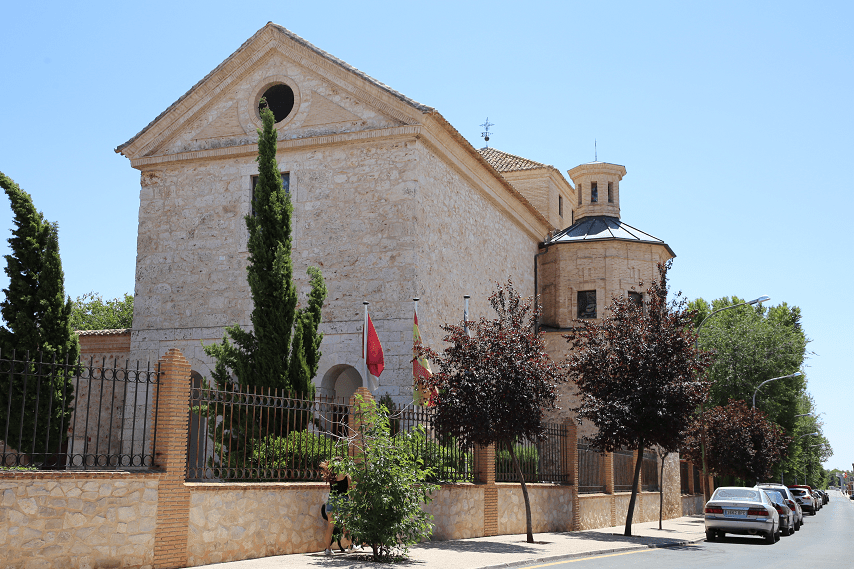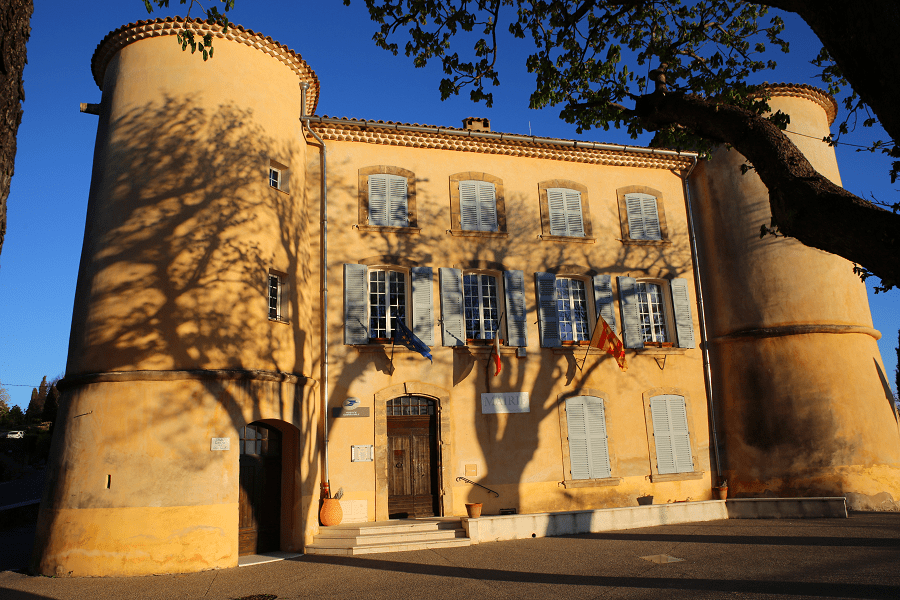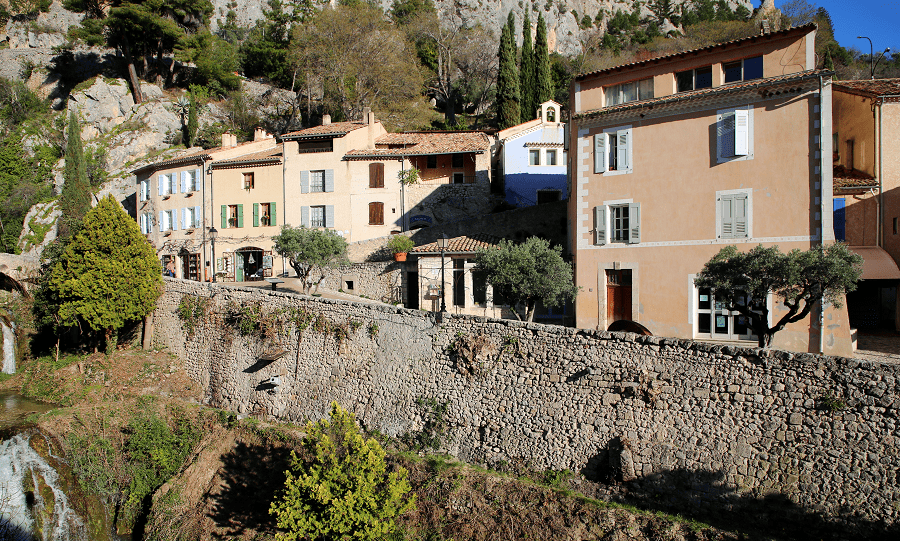Ocaña is a municipality and town in the northeast of the province of Toledo, in the autonomous community of Castilla-La Mancha, Spain.
Main attractions
There are numerous monuments and places of interest that the town has, however, at present the declaration of Historical Complex is only initiated. The main ones are listed below:
The Plaza Mayor de Ocaña is a baroque square that began to be built in 1777 by order of Carlos III. Its plant is a parallelogram of 55 x 52.5 meters. The ground floor has arcades or galleries all around it, made up of 70 pillars of padded ashlar masonry, with stone that probably comes from quarries in neighboring towns, such as Noblejas and Colmenar de Oreja.
La Fuente Grande is an example of Renaissance architecture, more precisely in the Herrerian style. It has the status of Asset of Cultural Interest. At the time it was built, it was known as Fuente Nueva, to distinguish it from the other source that already existed.
The Cárdenas Palace, also known as the Dukes of Frías, is a building with the status of Asset of Cultural Interest, dates back to the end of the 15th century and its style shows transitional components from Gothic to Renaissance.
The origins of the Parish Church of Santa María de la Asunción go back to a primitive mosque built in the 12th century.
The parish church of San Juan Bautista is a Catholic temple with Gothic and Mudejar evocations. Its origins date back to a Jewish synagogue, its land and part of the building being used to build a Christian church that was dedicated to Saint John the Baptist, whose stone carving was placed on top of the main door of the temple in 1634 and demolished during the Spanish Civil War.
The Santo Domingo de Guzmán Convent is a Renaissance construction from the mid-16th century. The Mendizábal Confiscation Decree, which abolished all the convents of the Peninsula, allowed some exceptions, among which was the Missionary College for Asia, that of the Dominicans of Ocaña.
The convent of San José has the status of Asset of Cultural Interest. This convent of Carmelite nuns or San José, in Renaissance style, was established by María de Bazán (spouse of Alonso de Ercilla, Knight of Santiago) with the authorization of His Excellency Cardinal Alberto de Austria, Archbishop of Toledo and with the consent of the City Council, on November 3, 1595, under the command of Agustín Ruiz de Ocaña.
The Santa Clara convent is located in the Plaza de Alonso de Ercilla. It is the oldest convent of those that were established in Ocaña.
The convent of Santa Catalina de Siena, in Renaissance style, is the third contemporary religious convent in Ocaña, erected on June 8, 1571 by Catalina de Guzmán y Vargas (widow of the famous captain Juan Maldonado, and daughter of Manuel de Guzmán and Inés de Vargas).
The tower of the church of San Martín has the status of a good of cultural interest.
The Lope de Vega de Ocaña Theater is a building that is located on Lope de Vega Street and is one of the most outstanding monuments in Ocaña.
The roll of justice or pillory is a stone column, topped by a wrought iron cross, located in the Plaza de José María Prada, in front of the Lope de Vega Theater.
The Old Fountain of Ocaña is an architectural monument, still in operation today. It is located on the outskirts, near the Hermitage of Jesús de las Cuevas, located in the Huertos valley that is adjacent to the Valdecuerno slope. It is nicknamed old because when the other fountain was built in Ocaña, it already existed.
The Royal Monastery of Our Lady of Hope was an old Franciscan monastery located on the outskirts of the city, today in ruins.
How to get to?
Distances to the nearest cities:
From Madrid 51 min (65.3 km) via A-4
From Toledo 42 min (55.1 km) via N-400
From Ciudad Real 1 hr 24 min (141 km) via A-4
From Guadalajara 1 hr 10 min (116 km) via A-2 and A-4
From Albacete 1 hr 47 min (196 km) via AP-36
From Cuenca 1 hr 9 min (130 km) via A-40
Main information
Area: 147 sq. km (municipality)
Coordinates: 39°57′25″N 3°29′48″W
Population: 12 437
Languages: Spanish
Currency: Euro
Visa: Schengen
Time: Central European UTC +1















